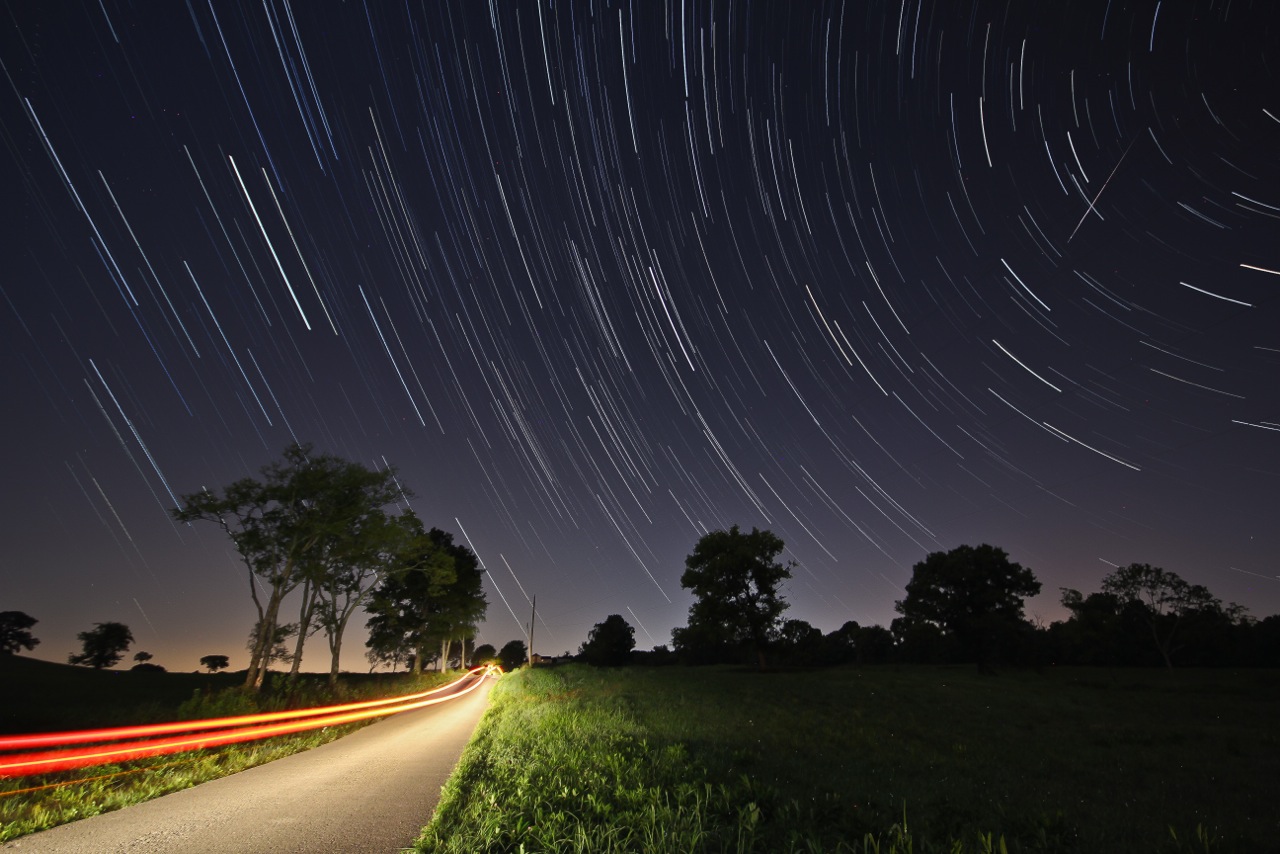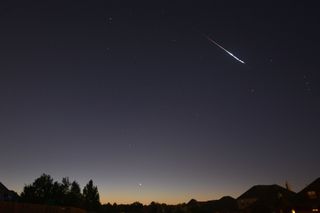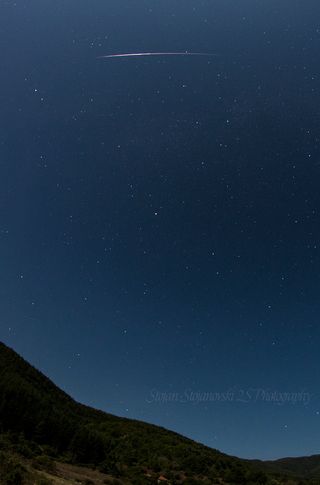Perseid Meteor Shower Thrills Stargazers Despite Bright Moon (Photos)

Intrepid photographers in dark parts of the world managed to capture some stunning photos of the Perseid meteor shower as it hit its peak, despite the bright light of a nearly full moon.
The Perseids peaked Tuesday night (Aug. 12) and into the wee hours of Wednesday morning. Though the bright moon probably did interfere with some observers' view of the shower, NASA cameras still caught sight of brilliant meteors streaking through the sky. The shower hit its peak rate over the eastern United States at about 3 a.m. EDT, according to NASA's Meteoroid Environments Office leader Bill Cooke.
"Despite the Supermoon [which rose on Aug. 10], our camera network here in the [southeast] recorded over 100 Perseids brighter than Mars last night," Cooke told Space.com via email. A NASA camera at the Tellus Science Museum in Georgia captured two Perseid meteors streaking through the sky at the same time, Cooke added. [See more photos of the 2014 Perseid meteor shower]
Skywatcher Cheryl Welch snapped a photo of a bright meteor streaking across the sky about Broken Arrow, Oklahoma. Venus shines right above the horizon at the bottom of the photo. "This is one of the brightest I've seen," Welch said of the meteor in an email to Space.com. "The trail stayed in the sky for at least 5 seconds."
Stargazers also caught sight of the meteor shower from outside the United States. Photographer Stojan Stojanovski managed to capture an amazing image of a Perseid meteor streaking through a star-speckled sky above green mountains in Macedonia.


The Perseid meteor shower graces night skies around the world every year in mid-August when Earth passes through the cloud of ice and dust left behind by Comet Swift-Tuttle. Astronomers Horace Tuttle and Lewis Swift first spotted the comet in 1862, and it takes 133 years to make a full orbit of the sun.
Get the Space.com Newsletter
Breaking space news, the latest updates on rocket launches, skywatching events and more!
"The [Perseid] meteors have been watched for almost 2,000 years," Slooh Community Observatory astronomer Bob Berman said during a Slooh meteor shower webcast Wednesday. "We have written records of the Chinese seeing them in the first few dozen years after the year 0, and they've been enjoyed ever since."
This year, even Google celebrated the celestial fireworks display with a Perseid meteor shower Google doodle showcasing amazing photos of past Perseid meteors.
Editor's Note: If you snap an amazing picture of the 2014 Perseid meteor shower or any other night sky view that you'd like to share for a possible story or image gallery, send photos, comments, and your name and location to managing editor Tariq Malik at spacephotos@space.com.
Follow Miriam Kramer @mirikramer and Google+. Follow us @Spacedotcom, Facebook and Google+. Original article on Space.com.
Join our Space Forums to keep talking space on the latest missions, night sky and more! And if you have a news tip, correction or comment, let us know at: community@space.com.

Miriam Kramer joined Space.com as a Staff Writer in December 2012. Since then, she has floated in weightlessness on a zero-gravity flight, felt the pull of 4-Gs in a trainer aircraft and watched rockets soar into space from Florida and Virginia. She also served as Space.com's lead space entertainment reporter, and enjoys all aspects of space news, astronomy and commercial spaceflight. Miriam has also presented space stories during live interviews with Fox News and other TV and radio outlets. She originally hails from Knoxville, Tennessee where she and her family would take trips to dark spots on the outskirts of town to watch meteor showers every year. She loves to travel and one day hopes to see the northern lights in person. Miriam is currently a space reporter with Axios, writing the Axios Space newsletter. You can follow Miriam on Twitter.












